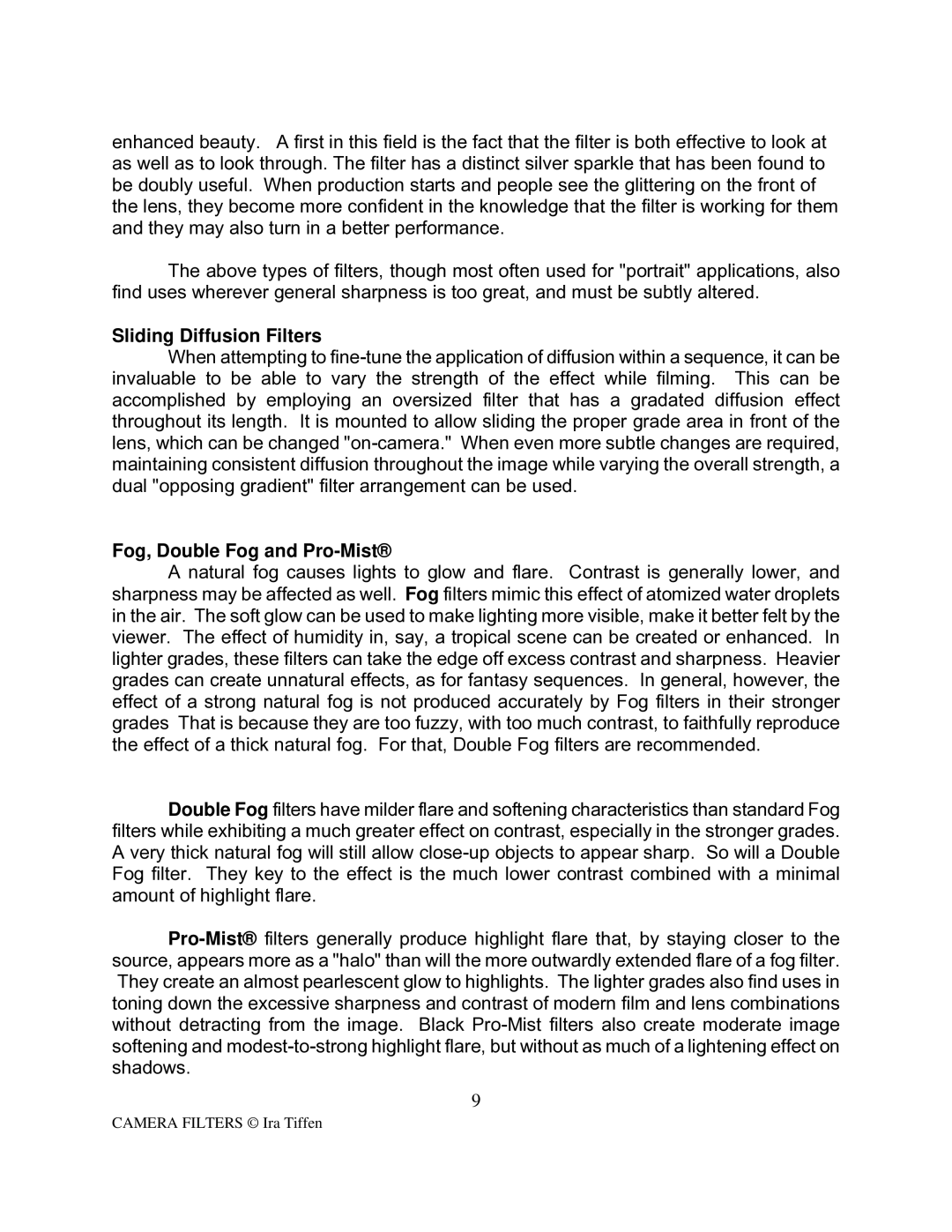enhanced beauty. A first in this field is the fact that the filter is both effective to look at as well as to look through. The filter has a distinct silver sparkle that has been found to be doubly useful. When production starts and people see the glittering on the front of the lens, they become more confident in the knowledge that the filter is working for them and they may also turn in a better performance.
The above types of filters, though most often used for "portrait" applications, also find uses wherever general sharpness is too great, and must be subtly altered.
Sliding Diffusion Filters
When attempting to
Fog, Double Fog and Pro-Mist®
A natural fog causes lights to glow and flare. Contrast is generally lower, and sharpness may be affected as well. Fog filters mimic this effect of atomized water droplets in the air. The soft glow can be used to make lighting more visible, make it better felt by the viewer. The effect of humidity in, say, a tropical scene can be created or enhanced. In lighter grades, these filters can take the edge off excess contrast and sharpness. Heavier grades can create unnatural effects, as for fantasy sequences. In general, however, the effect of a strong natural fog is not produced accurately by Fog filters in their stronger grades That is because they are too fuzzy, with too much contrast, to faithfully reproduce the effect of a thick natural fog. For that, Double Fog filters are recommended.
Double Fog filters have milder flare and softening characteristics than standard Fog filters while exhibiting a much greater effect on contrast, especially in the stronger grades. A very thick natural fog will still allow
9
